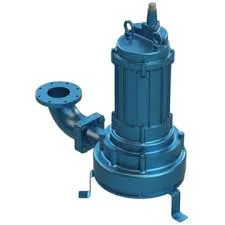Latin
- Afrikaans
- Albanian
- Amharic
- Arabic
- Armenian
- Azerbaijani
- Basque
- Belarusian
- Bengali
- Bosnian
- Bulgarian
- Catalan
- Cebuano
- Corsican
- Croatian
- Czech
- Danish
- Dutch
- English
- Esperanto
- Estonian
- Finnish
- French
- Frisian
- Galician
- Georgian
- German
- Greek
- Gujarati
- Haitian Creole
- hausa
- hawaiian
- Hebrew
- Hindi
- Miao
- Hungarian
- Icelandic
- igbo
- Indonesian
- irish
- Italian
- Japanese
- Javanese
- Kannada
- kazakh
- Khmer
- Rwandese
- Korean
- Kurdish
- Kyrgyz
- Lao
- Latin
- Latvian
- Lithuanian
- Luxembourgish
- Macedonian
- Malgashi
- Malay
- Malayalam
- Maltese
- Maori
- Marathi
- Mongolian
- Myanmar
- Nepali
- Norwegian
- Norwegian
- Occitan
- Pashto
- Persian
- Polish
- Portuguese
- Punjabi
- Romanian
- Russian
- Samoan
- Scottish Gaelic
- Serbian
- Sesotho
- Shona
- Sindhi
- Sinhala
- Slovak
- Slovenian
- Somali
- Spanish
- Sundanese
- Swahili
- Swedish
- Tagalog
- Tajik
- Tamil
- Tatar
- Telugu
- Thai
- Turkish
- Turkmen
- Ukrainian
- Urdu
- Uighur
- Uzbek
- Vietnamese
- Welsh
- Bantu
- Yiddish
- Yoruba
- Zulu
Telephone: +86 13120555503
Email: frank@cypump.com
Dec . 28, 2024 20:40 Back to list
China's Durable Metal Components for Slurry Pumps Ensuring High Performance and Reliability
The Importance of Metal Parts in China’s Slurry Pumps
Slurry pumps are essential components in various industries, particularly in mining, dredging, and wastewater treatment. In China, where industrial growth and resource extraction are pivotal to the economy, the role of slurry pumps and their metal parts cannot be overstated. With their ability to handle a mixture of liquids and solids, slurry pumps are designed to operate under extreme conditions, making the performance of their metal components critical.
Understanding Slurry Pumps
Slurry pumps are specialized pumps that transport a mixture of water, sediment, and other materials. They are built to endure abrasive and corrosive conditions typically found in mining and industrial applications. The efficiency and longevity of these pumps largely depend on the quality and durability of their metal parts. Components such as impellers, casings, and shafts need to be built from high-strength materials that can withstand erosion and wear.
Key Materials Used
In China, manufacturers predominantly use materials such as high chromium cast iron, nickel alloy, and stainless steel for slurry pump metal parts. High chromium cast iron is favored for its high hardness and resistance to abrasion, making it ideal for pumping abrasive slurries. Nickel alloys offer superior corrosion resistance, essential in applications involving acidic or saline solutions. Stainless steel, known for its excellent strength-to-weight ratio and corrosion resistance, is often used in less abrasive applications.
The choice of material not only affects the performance of the slurry pump but also impacts maintenance costs and downtime. A high-quality metal part can reduce the frequency of repairs and replacements, leading to increased operational efficiency and lower total cost of ownership.
Innovations in Manufacturing
china slurry pump metal parts

China’s advancements in manufacturing technology have led to improvements in the production of metal parts for slurry pumps. Investment in modern casting techniques, surface treatment processes, and quality control systems has propelled Chinese manufacturers to the forefront of the slurry pump industry. Companies are increasingly adopting computer-aided design (CAD) and computer numerical control (CNC) machining to ensure precision-engineered components that meet stringent industry standards.
Moreover, research and development efforts are focusing on creating composite materials that combine the best properties of metals and non-metals, providing solutions for even more challenging pumping applications. This innovation is vital as industries demand more efficient, durable, and cost-effective solutions.
The Environmental Impact
As environmental awareness grows, the slurry pump industry in China is also adapting. Manufacturers are exploring eco-friendly materials and production methods to minimize the environmental footprint of their operations. The use of recyclable materials in metal parts not only supports sustainability but can also resonate with customers looking for environmentally compliant products.
Additionally, enhancing the efficiency of slurry pumps through better design and superior materials can lead to reduced energy consumption, contributing further to environmental sustainability. The focus on efficiency extends to decreasing wear and tear, thus minimizing waste produced over the lifespan of the pump.
Conclusion
In conclusion, metal parts are a fundamental aspect of slurry pumps, especially in a manufacturing hub like China. The choice of material, advances in manufacturing technology, and a focus on environmental sustainability are critical factors that determine the effectiveness and longevity of slurry pumps. As industries evolve, the ongoing innovation in metal parts will play a crucial role in enhancing the capabilities and reliability of slurry pumps, ensuring that they continue to meet the demands of various challenging applications. This commitment to quality and innovation will not only benefit manufacturers but will also contribute to the broader aims of efficiency and sustainability in industrial processes.
-
Durable & Efficient Submersible Mixed Flow Propeller Pumps Quotes
NewsApr.29,2025
-
BPA-Free Sand Gravel Pump for Aquariums & Industrial Use Terapump
NewsApr.29,2025
-
High-Efficiency Big Capacity Double Suction Pumps Bulk Supply
NewsApr.28,2025
-
High-Performance Vapor Honing Slurry Pumps Durable & Efficient Solutions
NewsApr.28,2025
-
OEM Slurry Pump Engineering Factory Custom Solutions & Durable Pumps
NewsApr.28,2025
-
1HP Sewage Submersible Pump Durable Vertical & WQ/QW Models Supplier
NewsApr.28,2025










